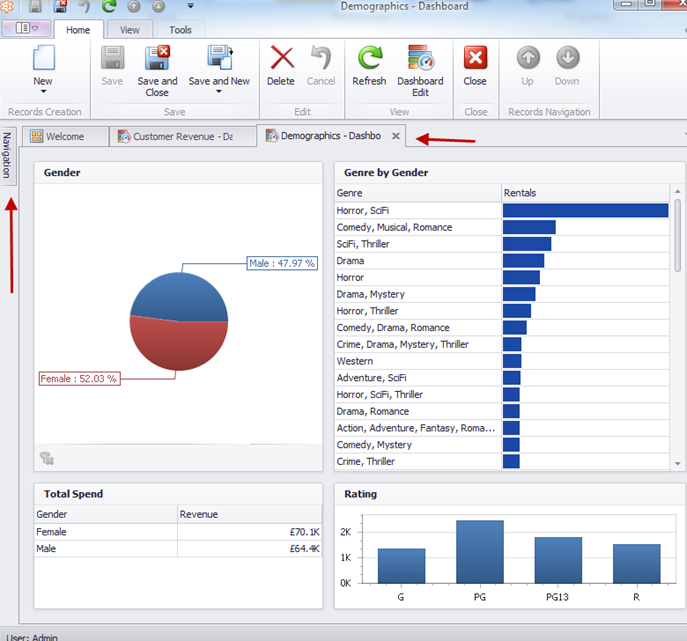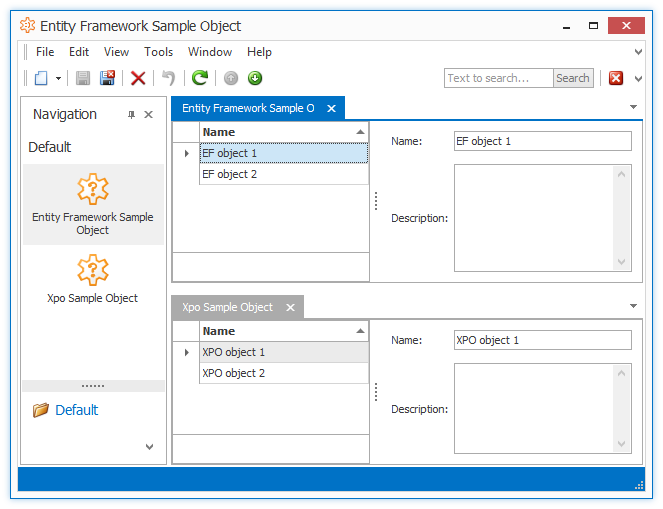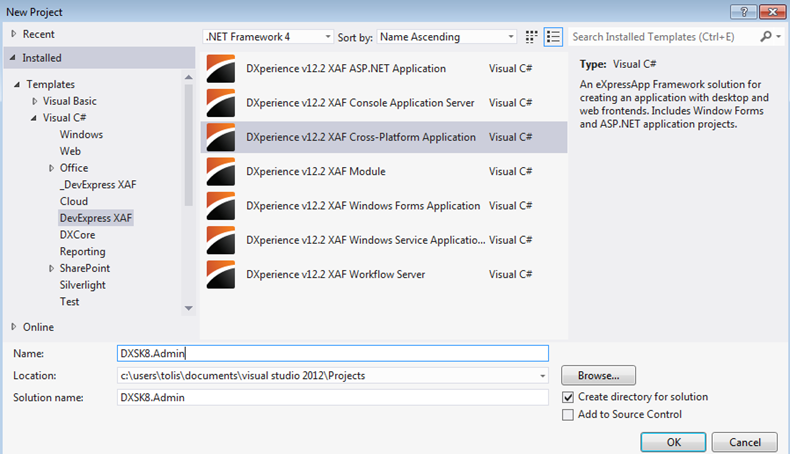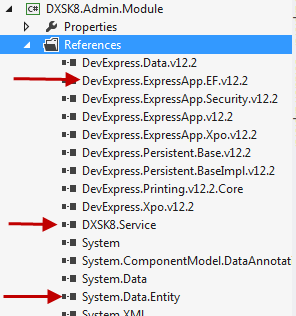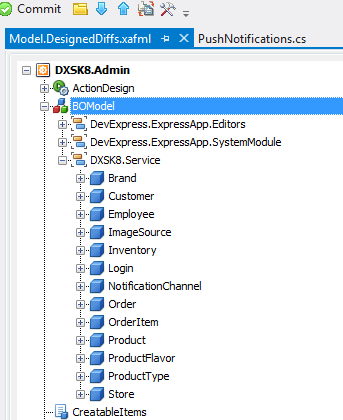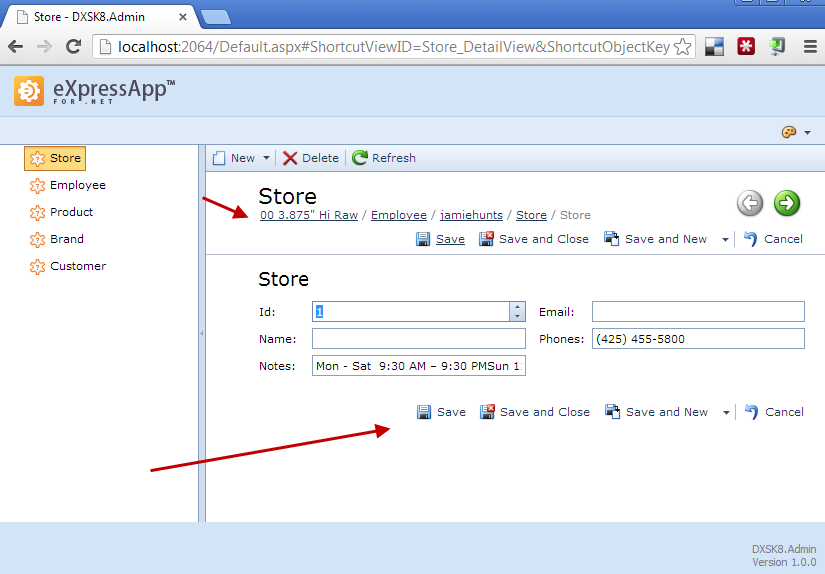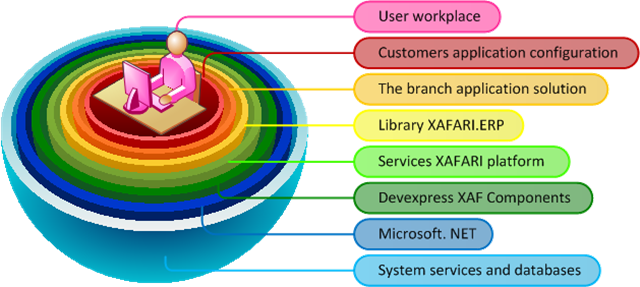I wanted to take a moment to profile an XAF customer and offer a real-world example of how the eXpressApp Framework (XAF) is used around the world.
Meet XAFARI (www.xafari.ru) from Galaktika - a business platform designed to quickly build advanced business applications with an n-tier architecture.
This middleware class solution is fully based on the eXpressApp Framework (XAF), which is essentially a set of best patterns & practices for building desktop LOB apps using DevExpress controls for both Windows and the Web.
Technically, and like the community-driven eXpand Framework project, XAFARI is built on top of XAF and provides many reusable modules and powerful tools for various verticals.
The following figure depicts how XAFARI is constructed internally:
![Xafari_1 Xafari_1]()
About Galaktika
Galaktika Corporation (http://galaktika.ru ) is an international software company that has more than 25 years of success developing control systems in Russia and CIS. According to the "Russia Enterprise Application Software 2011-2015 Forecast and 2010 Vendor Shares" study by IDC, Galaktika Corporation is in the top five for enterprise management systems (others in this list include SAP, 1C, Oracle and Microsoft Dynamics).
The advantages of XAFARI
XAFARI has proven itself through the years across multiple production applications used by countless organizations around the world. The following is a list of solutions built using the XAF-based development platform:
Galaktika EAM– enterprise asset management;
Galaktika AMM– production and project management (advanced manufacturing management);
Galaktika HR– human resources and talent management;
Galaktika SPM– training management university
Galaktika CnP– consolidation, planning and monitoring (consolidation and planning);
Galaktika IPMS– investment programs management system;
Galaktika Budjet– planning and monitoring budgets for the holdings.
You can learn more about these production systems at http://www.galaktika.ru/ where you can also find many screenshots and videos (example) demonstrating real-world use of these systems.
Business owners and end-users alike value XAF and XAFARI for the rich collection of pre-built vertical market solutions and for its extensibility and a number of generic extensions.
Most powerful examples include custom docking panels, advanced batch editing and security management, custom UI elements like Property Editors and new Action types (checked Action, aggregated Actions, etc.).
Another XAFARI advantage is its documentation. You can easily find detailed feature descriptions with many pictures and even videos for complex functionality:
![Xafari_3 Xafari_3]()
You’ve seen what Galaktika has done with XAF….Are you ready to evaluate XAF for yourself?
To explore the capabilities of the eXpressApp Framework and learn how you can save time and bring applications to market quicker and target both WinForms and ASP.NET, please visit our XAF page at www.devexpress.com/xaf
What Galaktika executives say about XAF’s role in their business?
Sergey Zaycev, head of development for the XAFARI platform:
![clip_image005 clip_image005]() “I think that we use 100% of the XAF capabilities while implementing our projects. We mainly deliver Windows and Web solutions to our clients, and actively use the multi-database systems support provided by XAF and XPO. In particular, we deploy our solutions on Microsoft SQL Server and Oracle, while also using in-memory database support for creating demo versions of our apps. I want to note that the XAF’s architecture is well-thought in terms of the expansion the standard features of the platform – these are simply countess extensibility points and methods. Proper use of design patterns developed into the XAF platform itself allowed us to create a large number of custom modules and components that are easily and naturally integrated into the framework. It’s also worth mentioning that the XAF Workflow module allowed us to simplify the Microsoft WF integration (we use this in some of our projects) and served as a base for our custom tailored workflow solution for organizing documents flow.
“I think that we use 100% of the XAF capabilities while implementing our projects. We mainly deliver Windows and Web solutions to our clients, and actively use the multi-database systems support provided by XAF and XPO. In particular, we deploy our solutions on Microsoft SQL Server and Oracle, while also using in-memory database support for creating demo versions of our apps. I want to note that the XAF’s architecture is well-thought in terms of the expansion the standard features of the platform – these are simply countess extensibility points and methods. Proper use of design patterns developed into the XAF platform itself allowed us to create a large number of custom modules and components that are easily and naturally integrated into the framework. It’s also worth mentioning that the XAF Workflow module allowed us to simplify the Microsoft WF integration (we use this in some of our projects) and served as a base for our custom tailored workflow solution for organizing documents flow.
Separately, it should be said about the Domain Components (DC) technology. The proposed concept of describing data model together with the idea of the modular construction of the final application, allows us to fully realize our ideas, absolutely. Defining business objects through interfaces instead of classes allowed us to use multiple inheritance, which is my opinion, is the key when implementing large projects with a large number of applications built on the same platform.
In general, the use XAF platform has significantly cut our costs and, in particular, to give up the need to develop our own ORM system and framework.
I hope to prepare a case-study in the future, to provide more technical details and information on our experience with DevExpress.”
Alexander Burgardt, Vice President at Galaktika:
![clip_image006 clip_image006]() “As the leader and curator of Galaktika EAM, I can confirm that the DevExpress XAF platform is very comfortable, modern and advanced, can really quickly build solutions, and in addition, a lot of changes in the system can be made by the end-users, even without programming, but simply by configuring forms, algorithms and business processes. Finally, I want to say that in addition to the existing systems the Galaktika Corporation will develop its new products on the XAFARI platform.”
“As the leader and curator of Galaktika EAM, I can confirm that the DevExpress XAF platform is very comfortable, modern and advanced, can really quickly build solutions, and in addition, a lot of changes in the system can be made by the end-users, even without programming, but simply by configuring forms, algorithms and business processes. Finally, I want to say that in addition to the existing systems the Galaktika Corporation will develop its new products on the XAFARI platform.”
Learn more about XAFARI
To learn more about XAFARI, make sure to visit their website. Please note that the site is in Russian and its English version is still in the works.
You can use Chrome’s built-in translation tools if you need to view the site:
![Xafari_2 Xafari_2]()
To download the latest version of XAFARI, visit http://xafari.ru/download. XAFARI currently supports DXperience v12.2.4.
Contact information for Galaktika can be found at: http://xafari.ru/contact_information
![]()




